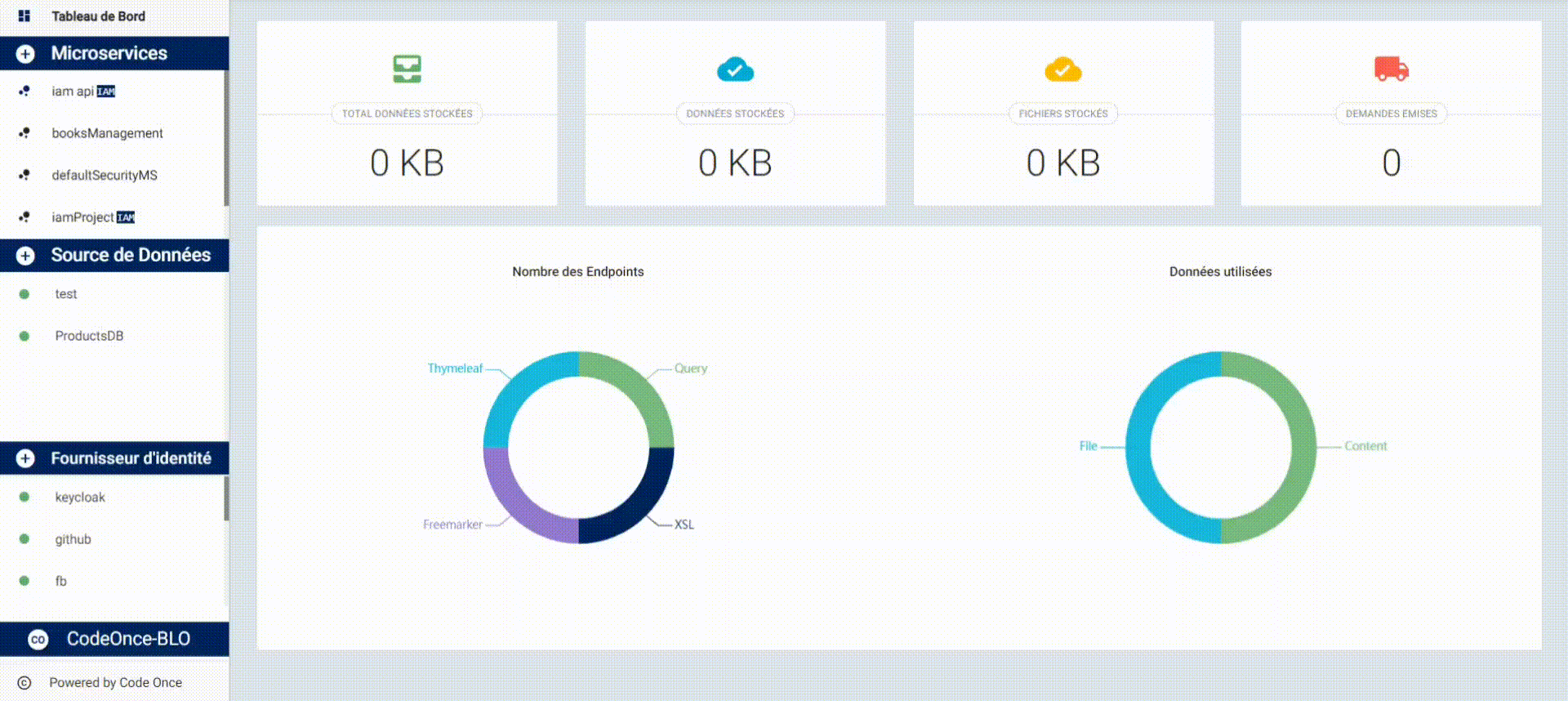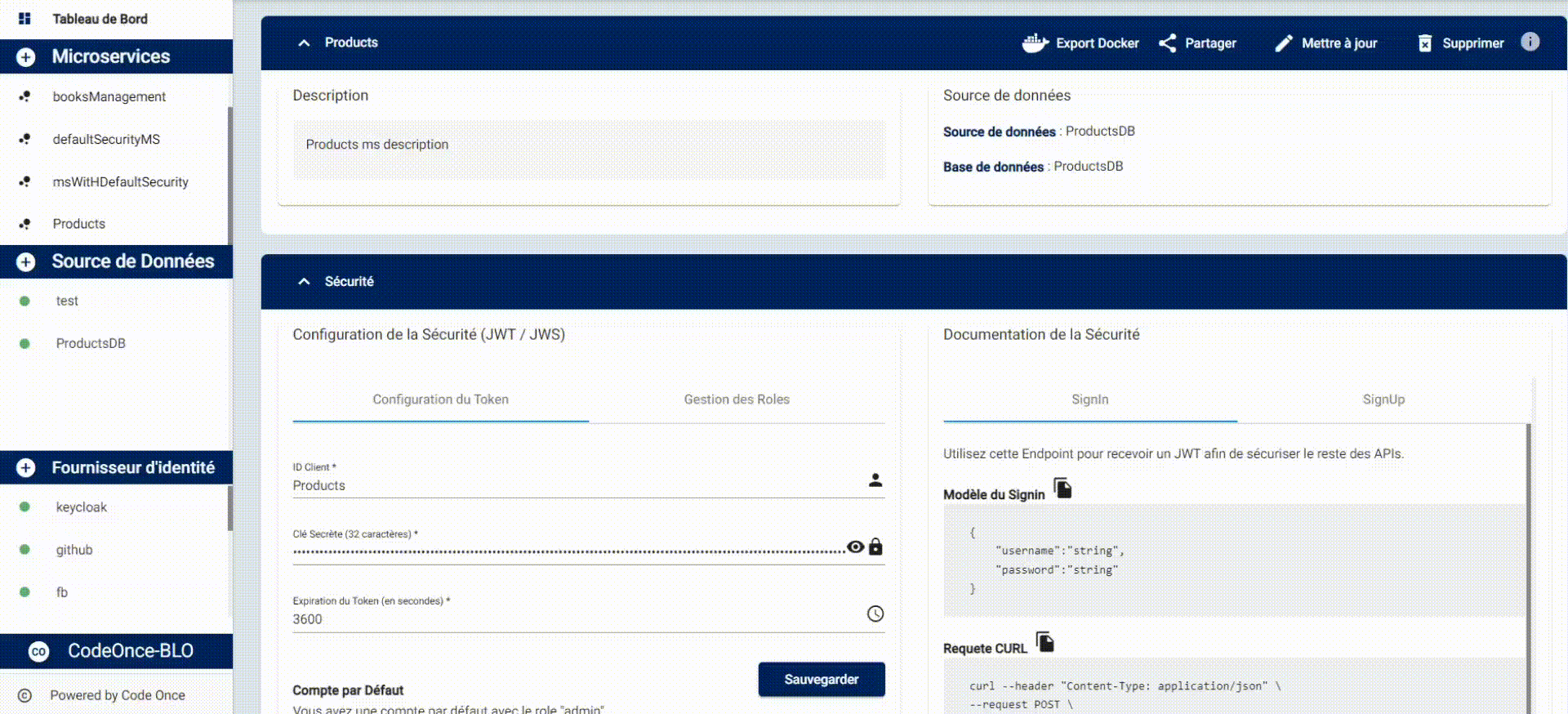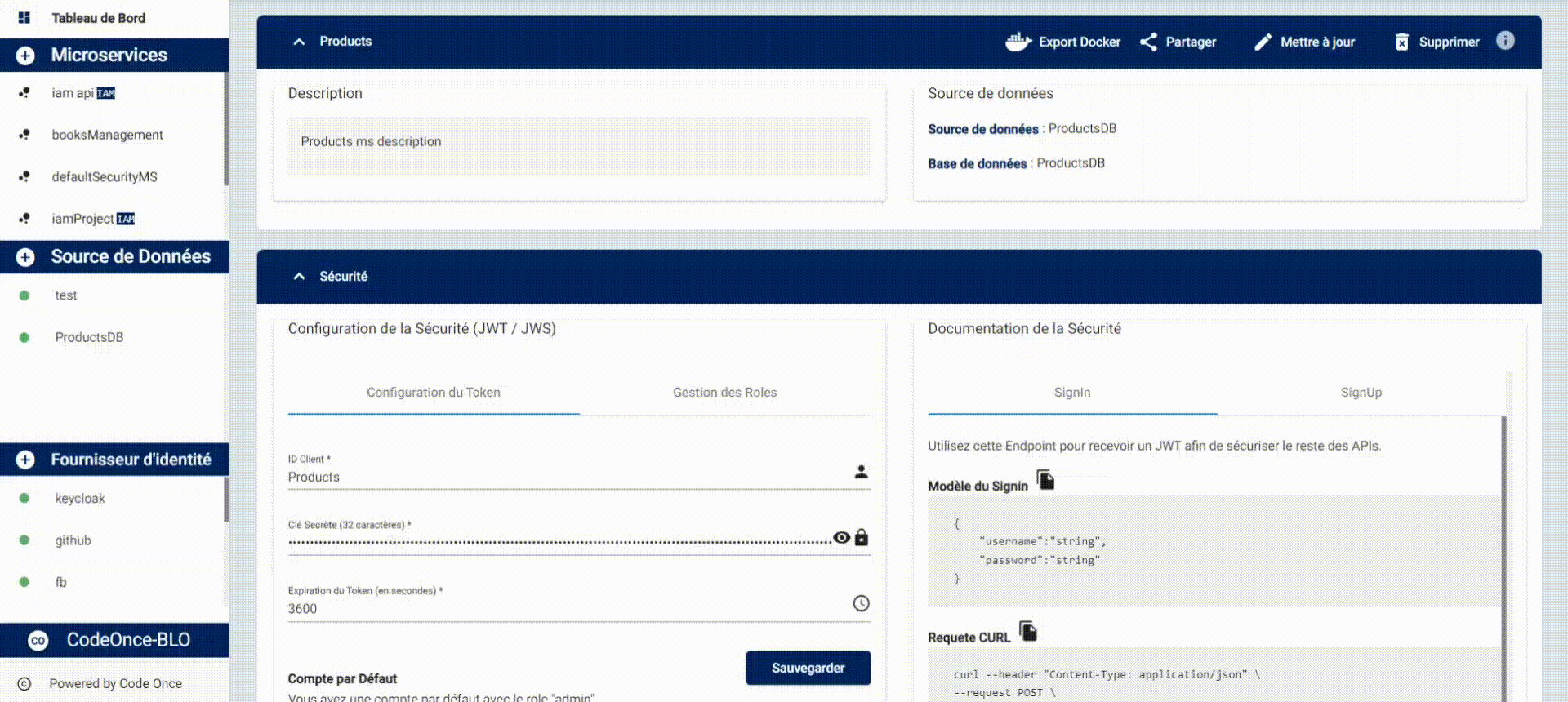Add Microservice
The creation of a microservice in a few clicks is one of the major features of Grizzly API , in this section we will present this process and its different options.
To export your microservice, you must have mongoDB as a linked database to your microservice.
A microservice can have 3 types :
- Microservice : when you need to create a microservice with java , spring boot, aws and supports open api
- Markup project : when you need to use a supported markup language like : XSLT, free marker, thymleaf … and expose them as a Rest API
- IAM API : when you need to create a microservice for Identity and Access Management
In case of working on project with microservice API or Markup API type while the security is enabled we need to link this project with a Database. For this you have 3 alternatives:
- Link it to a new free database in MongoDB which will be created automatically
- Select an existing database
- Add a database in MongoDB, Elasticsearch or CoucheBase
We can enable or disable the security for the projects with microservice API or Markup API type. In case of working on project with microservice API or Markup API type while the security is enabled we need to specify the type of security. For this we have 2 alternatives:
- Continuing with default type of security
- Delegate the security to an IAM API
In this example, we will create a microservice of type API REST project with the name Products and link it to an existing database named ProductsDB with Default security.
In this example, we will create a microservice of type IAM API project with the name IAMproject and link it to an existing identity providers named keycloak, github and google.
To use your microservice you need its server url which you can find after following this steps :
→ By the same way, you can get the swagger file of your microservice and also in open api format .
And now your microservice is ready to use , you can manage it with the Security Configuration and also add endpoints to it.



